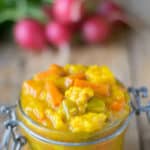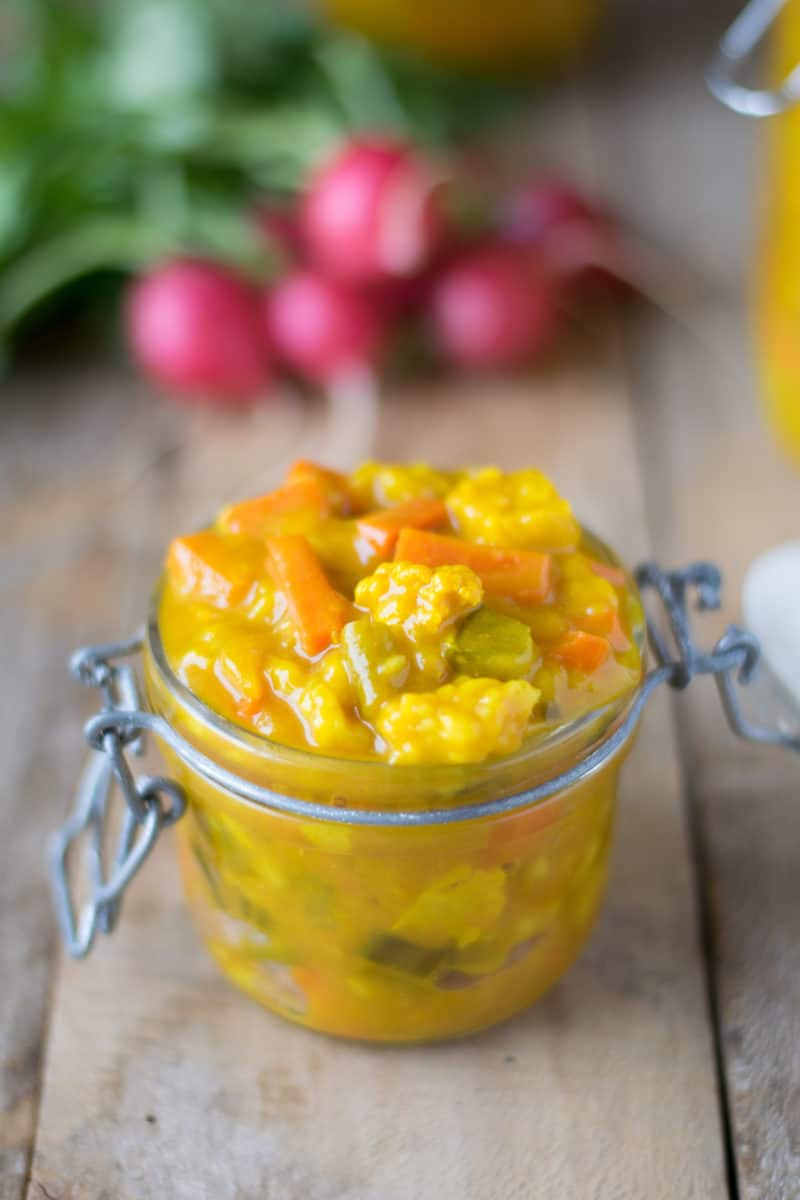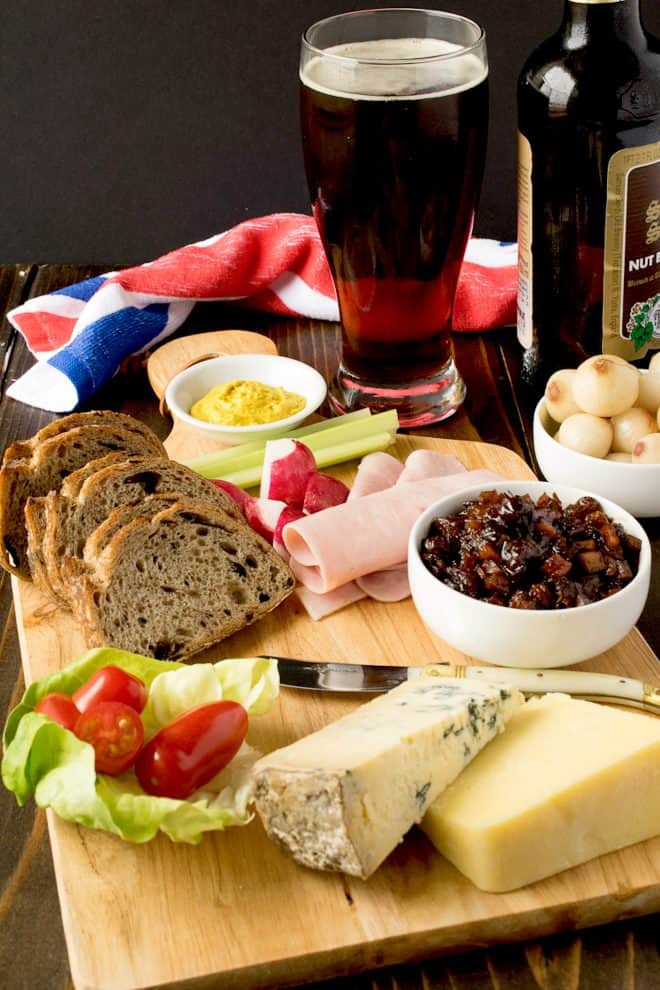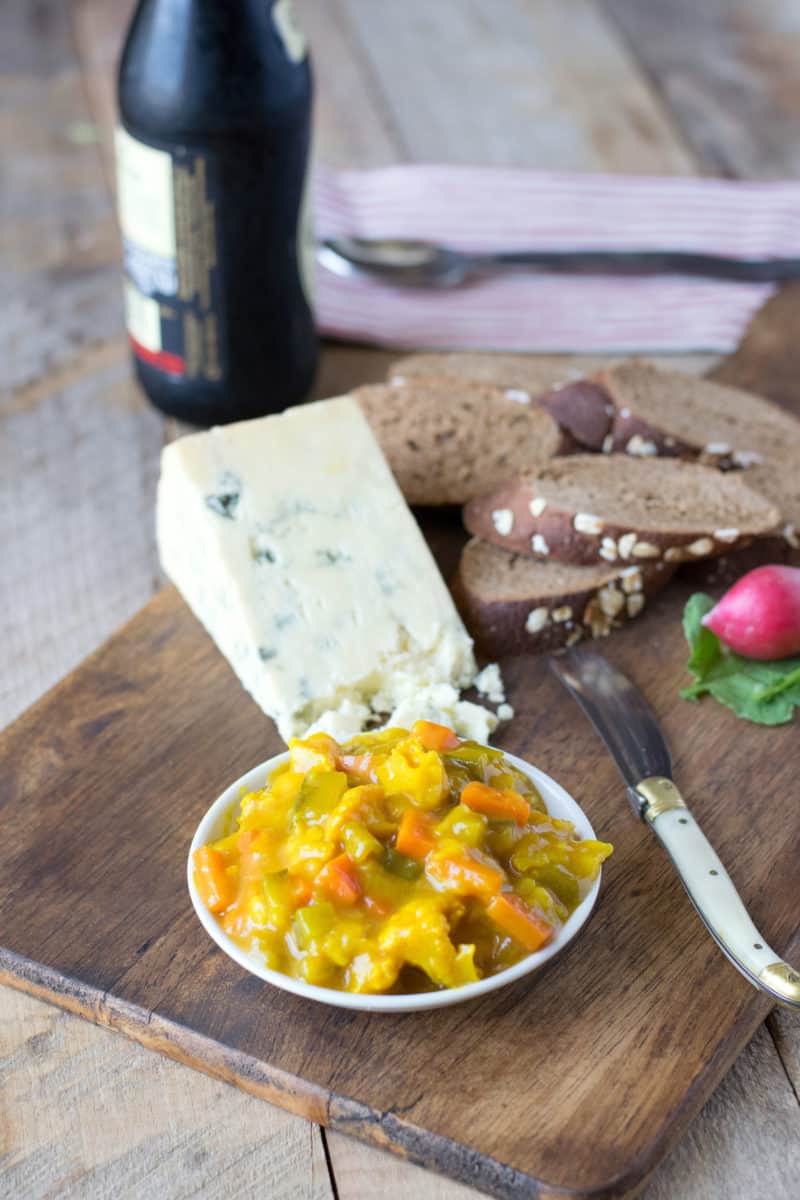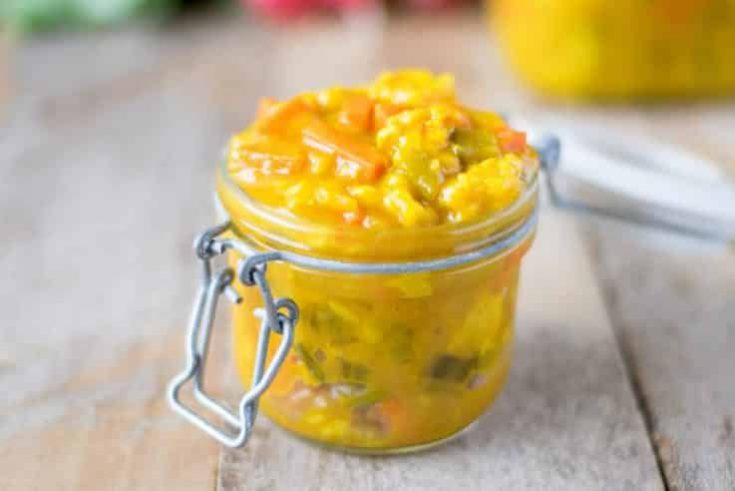This popular British condiment is usually served with cheese platters, but can also transform a simple ham sandwich or used as one of the components of the Ploughman’s lunch. (see picture below) . There are not really many dishes that this relish would not complement. British people love their pickles. Many foods get pickled, from onions to even eggs (yes, this is true). If you like spicy mustard, you will love this piccalilli. The vegetables used need to reflect the British nature of the condiment and that are easily available. I have seen mango and other ingredients used in recipe, but these are not typically British.
How to make piccalilli
Vegetables like cauliflower, shallot, cucumber, green beans and carrot are cooked in a mix of vinegar, turmeric, mustard and spices.
What are the ingredients of Piccalilli?
My choice of vegetables are chopped cauliflower, shallots, cucumber, and green beans which are typically what you will find in most piccalilli recipes. I added carrots for color, but these are optional. The vegetables are brined to remove moisture, then cooked and pickled in the sauce for at least 3-4 weeks. It is important that the vegetables are chopped the same size so they all cook at the same rate and this also makes for easier eating. The sauce is a rich combination of vinegar, turmeric (which gives its distinctive color) mustard powder, ground ginger and nutmeg that develops deep flavor the longer it sits.
The history of piccalilli
Piccalilli is traced back to the 18th Century and was originally called Indian pickle, which would indicate its origin. I would imagine since it is a low cost, easy food to make and lasts for months. This was the reason it was so popular and has remained so to this day.
Canning/preserving piccalilli
As I am not versed in such methods, a reader advised it is not recommended to can anything that contains flour as it can go rancid. The recipe yields 4 cups/32 ounces/1 quart/1 liter of piccalilli. This is may be different for everyone depending how much liquid evaporates during the simmering.
